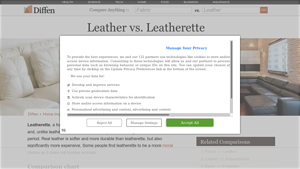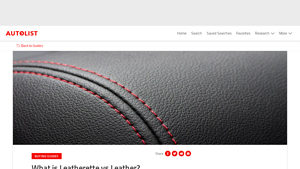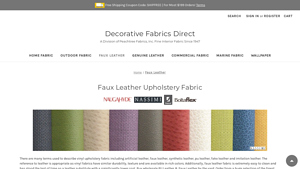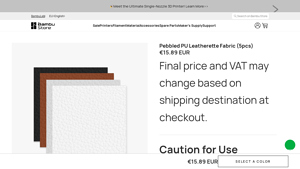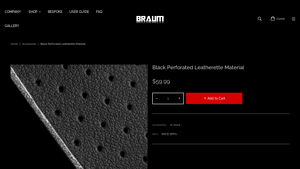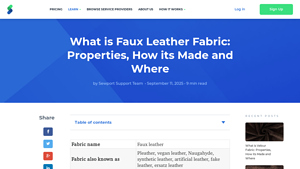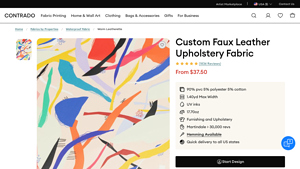Introduction: Navigating the Global Market for leatherette material
In the ever-evolving landscape of global commerce, sourcing high-quality leatherette material presents a unique challenge for B2B buyers, especially those in Africa, South America, the Middle East, and Europe. As industries increasingly lean towards sustainable and cost-effective alternatives, understanding the nuances of leatherette—often favored for its affordability and versatility—can significantly impact purchasing decisions. This comprehensive guide delves into the various types of leatherette, exploring their applications across multiple sectors, including automotive, furniture, and fashion.
Additionally, we will cover critical aspects of supplier vetting, ensuring that international buyers can navigate the complexities of sourcing with confidence. By examining cost factors, market trends, and quality indicators, this guide equips B2B buyers with the insights needed to make informed decisions. Whether you’re in Nigeria looking for durable upholstery options or in Germany seeking innovative design solutions, our resource is tailored to meet the specific needs of diverse markets. Empower yourself with the knowledge to effectively evaluate suppliers and products, ultimately optimizing your procurement process in the competitive leatherette market.
Table Of Contents
- Top 10 Leatherette Material Manufacturers & Suppliers List
- Introduction: Navigating the Global Market for leatherette material
- Understanding leatherette material Types and Variations
- Key Industrial Applications of leatherette material
- 3 Common User Pain Points for ‘leatherette material’ & Their Solutions
- Strategic Material Selection Guide for leatherette material
- In-depth Look: Manufacturing Processes and Quality Assurance for leatherette material
- Practical Sourcing Guide: A Step-by-Step Checklist for ‘leatherette material’
- Comprehensive Cost and Pricing Analysis for leatherette material Sourcing
- Alternatives Analysis: Comparing leatherette material With Other Solutions
- Essential Technical Properties and Trade Terminology for leatherette material
- Navigating Market Dynamics and Sourcing Trends in the leatherette material Sector
- Frequently Asked Questions (FAQs) for B2B Buyers of leatherette material
- Strategic Sourcing Conclusion and Outlook for leatherette material
- Important Disclaimer & Terms of Use
Understanding leatherette material Types and Variations
| Type Name | Key Distinguishing Features | Primary B2B Applications | Brief Pros & Cons for Buyers |
|---|---|---|---|
| PVC Leatherette | Made from polyvinyl chloride; durable and waterproof | Automotive interiors, affordable furniture | Pros: Cost-effective, UV resistant; Cons: Less breathable, can crack over time. |
| PU Leatherette | Made from polyurethane; softer and more flexible | Fashion accessories, upholstery, automotive | Pros: More eco-friendly, resembles real leather; Cons: Can be less durable than PVC. |
| Bonded Leatherette | Composed of leather scraps bonded with synthetic materials | Budget furniture, low-cost handbags | Pros: Affordable, eco-conscious; Cons: Lower durability, may not have a premium feel. |
| Microfiber Leatherette | Made from ultra-fine synthetic fibers; breathable | High-end furniture, luxury automotive seats | Pros: Soft touch, excellent durability; Cons: Higher cost compared to other synthetic options. |
| Recycled Leatherette | Utilizes recycled leather scraps; eco-friendly option | Sustainable fashion, eco-conscious furniture | Pros: Sustainable, unique textures; Cons: Availability may vary, potential for inconsistent quality. |
What Are the Key Characteristics of PVC Leatherette?
PVC leatherette is a widely used synthetic material, known for its durability and resistance to water. It is primarily utilized in automotive interiors and budget-friendly furniture due to its cost-effectiveness. B2B buyers should consider its long-lasting nature and resistance to UV light; however, it is important to note that PVC can become less breathable over time and may crack under stress. This material is ideal for applications where durability is prioritized over luxury feel.
How Does PU Leatherette Compare in Softness and Flexibility?
PU leatherette stands out for its softness and flexibility, making it an attractive choice for fashion accessories and upholstery. This type of leatherette mimics the feel of real leather more closely than PVC, making it suitable for high-end applications. B2B buyers should weigh its eco-friendliness against potential durability concerns, as PU may wear out faster than PVC. Nonetheless, its aesthetic appeal can justify the investment for luxury brands.
What Is Bonded Leatherette and Its Typical Uses?
Bonded leatherette is crafted from leather scraps that are bonded with synthetic materials. This type is often found in budget furniture and low-cost handbags. Its affordability and eco-conscious production process can appeal to buyers looking to minimize costs while still offering a leather-like appearance. However, B2B buyers should be aware of its lower durability and premium feel compared to other leatherette types, which may affect customer perceptions.
Why Choose Microfiber Leatherette for Luxury Applications?
Microfiber leatherette is made from ultra-fine synthetic fibers, providing a soft touch and breathability. It is frequently used in high-end furniture and luxury automotive seats. B2B buyers should consider this option for products that demand a premium feel without the high maintenance of real leather. Although it comes at a higher price point than other synthetic materials, its durability and comfort can enhance customer satisfaction and brand reputation.
What Are the Benefits of Using Recycled Leatherette?
Recycled leatherette incorporates leather scraps into its composition, making it an eco-friendly choice for sustainable fashion and furniture. This material not only offers unique textures but also appeals to environmentally conscious consumers. B2B buyers should note that while it promotes sustainability, the availability and quality may vary. Ensuring a reliable supply chain is crucial for maintaining product consistency and meeting customer expectations.
Key Industrial Applications of leatherette material
| Industry/Sector | Specific Application of leatherette material | Value/Benefit for the Business | Key Sourcing Considerations for this Application |
|---|---|---|---|
| Automotive | Interior upholstery and seat covers | Cost-effective, durable, and easy to maintain alternative to leather; enhances aesthetic appeal. | Ensure UV resistance and easy cleaning properties; verify compliance with safety standards. |
| Furniture | Sofas, chairs, and other upholstery | Offers a stylish and versatile option at a lower price point; available in various colors and textures. | Assess durability and stain resistance; check for eco-friendly production processes. |
| Fashion Accessories | Handbags, wallets, and shoes | Provides a cruelty-free option while maintaining a premium look; lightweight and versatile for design. | Evaluate texture and finish quality; confirm sourcing of non-toxic materials. |
| Hospitality | Restaurant seating and décor | Durable and easy to clean, enhancing the overall guest experience; customizable for branding. | Consider fire-retardant properties and long-term wear; ensure adherence to health regulations. |
| Medical Equipment | Patient chairs and exam tables | Easy to disinfect and maintain, reducing cross-contamination risks; provides comfort without high costs. | Source materials that meet health and safety standards; assess resistance to chemicals and wear. |
How is Leatherette Material Used in the Automotive Sector?
Leatherette is widely utilized in automotive interiors, particularly for seat covers and upholstery. It provides a cost-effective alternative to genuine leather, allowing manufacturers to offer stylish interiors at a lower price point. For international buyers, especially from regions like Africa and South America, sourcing high-quality leatherette that is UV resistant and easy to clean is crucial to ensure longevity and maintain aesthetic appeal. Additionally, compliance with local safety standards is a key consideration when selecting suppliers.
What are the Applications of Leatherette in Furniture?
In the furniture sector, leatherette is favored for its versatility and affordability. It is commonly used in sofas, chairs, and other upholstery items, allowing manufacturers to offer a range of colors and textures that appeal to diverse consumer tastes. Buyers from Europe and the Middle East should prioritize durability and stain resistance in their sourcing decisions, as well as eco-friendly production processes to meet growing consumer demand for sustainable options.
How is Leatherette Used in Fashion Accessories?
Fashion accessories such as handbags, wallets, and shoes frequently incorporate leatherette due to its lightweight nature and cruelty-free appeal. This material allows designers to create trendy, stylish products without the ethical concerns associated with animal leather. For B2B buyers, especially in emerging markets, evaluating the texture and finish quality is essential to ensure that the final products meet consumer expectations. Additionally, confirming that materials are sourced from non-toxic suppliers can enhance brand reputation.
What are the Benefits of Leatherette in the Hospitality Industry?
In the hospitality sector, leatherette is often used for restaurant seating and décor, providing a durable and easy-to-clean solution that enhances guest experiences. Its customizable nature allows businesses to align seating designs with branding aesthetics. Buyers should consider fire-retardant properties and long-term wear when sourcing leatherette for hospitality applications, as these factors are critical for maintaining safety and comfort in high-traffic environments.
How is Leatherette Beneficial in Medical Equipment?
Leatherette is increasingly being used in medical equipment, particularly for patient chairs and exam tables. Its easy-to-disinfect surface helps reduce cross-contamination risks, which is crucial in healthcare settings. For buyers in this sector, sourcing materials that comply with health and safety standards is paramount. Additionally, assessing the material’s resistance to chemicals and wear can ensure that it meets the rigorous demands of medical environments, providing both comfort and safety for patients.
3 Common User Pain Points for ‘leatherette material’ & Their Solutions
Scenario 1: Understanding Durability Concerns with Leatherette Material
The Problem: B2B buyers often face challenges regarding the longevity of leatherette products. While leatherette is generally marketed as a cost-effective alternative to genuine leather, many buyers have experienced issues with premature wear and tear, such as cracking or fading, especially in high-use environments like automotive interiors or office furniture. This can lead to dissatisfaction among customers, potential returns, and ultimately, a negative impact on brand reputation.
The Solution: To address durability concerns, it’s crucial for B2B buyers to source high-quality leatherette materials specifically designed for their intended application. When negotiating with suppliers, inquire about the material’s thickness, composition (preferably PU over PVC for better durability), and UV resistance ratings. Look for certifications that indicate the leatherette has passed rigorous tests for wear, tear, and colorfastness. Additionally, consider providing maintenance guidelines to end-users to prolong the lifespan of leatherette products. Regular cleaning with appropriate solutions can help maintain the material’s appearance, thus enhancing customer satisfaction.
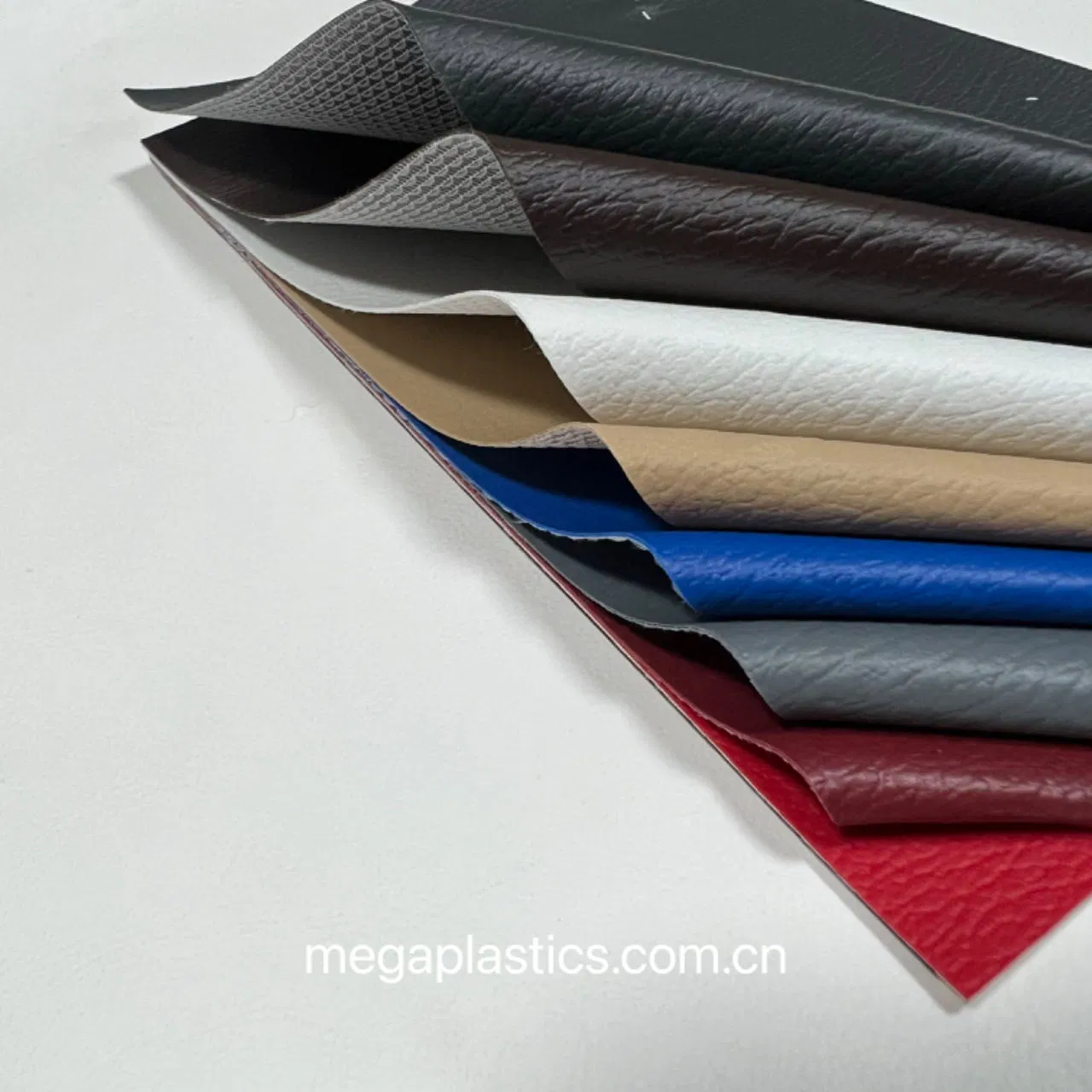
Illustrative image related to leatherette material
Scenario 2: Navigating Ethical and Environmental Considerations
The Problem: As the demand for sustainable products grows, B2B buyers are increasingly confronted with ethical dilemmas surrounding leatherette materials. Concerns about the environmental impact of synthetic materials, particularly PVC, can lead to negative consumer perceptions. Buyers may struggle to reconcile these concerns with the need for cost-effective solutions, especially in markets sensitive to environmental issues.
The Solution: B2B buyers can alleviate these concerns by prioritizing eco-friendly leatherette options made from biodegradable or recycled materials. When sourcing, ask suppliers for details about their manufacturing processes and the environmental footprint of their products. Look for materials that utilize water-based adhesives and non-toxic dyes to minimize harmful emissions. Additionally, consider partnering with manufacturers committed to sustainable practices, as this not only enhances your product offering but also aligns your brand with the growing consumer preference for ethical products. Marketing these eco-friendly attributes can further appeal to environmentally conscious consumers.
Scenario 3: Overcoming Color and Texture Limitations in Leatherette
The Problem: Another common challenge faced by B2B buyers is the perceived lack of variety in color and texture options available in leatherette materials. This limitation can hinder creativity and branding efforts, particularly for businesses in fashion, automotive, or furniture sectors that require specific aesthetics to appeal to their target audience. Buyers may find themselves forced to settle for generic options that do not align with their vision.
The Solution: To expand the range of options available, buyers should seek suppliers that offer customizable leatherette solutions. Many manufacturers now provide the ability to create bespoke colors, textures, and finishes, allowing businesses to maintain their brand identity while using leatherette. Engaging with suppliers early in the design process can lead to innovative solutions tailored to specific project needs. Additionally, consider requesting samples of various finishes and colors to evaluate their compatibility with your design concepts before making a bulk purchase. This proactive approach can ensure that the final products meet aesthetic requirements while still leveraging the benefits of leatherette materials.
Strategic Material Selection Guide for leatherette material
What Are the Key Materials Used in Leatherette Production?
Leatherette, a synthetic alternative to leather, is produced using various materials, each with distinct properties and implications for B2B buyers. Understanding these materials is crucial for making informed purchasing decisions, especially for international buyers from diverse markets such as Africa, South America, the Middle East, and Europe.
What Are the Key Properties of PVC in Leatherette?
Polyvinyl Chloride (PVC) is one of the most common materials used in leatherette production. It is known for its excellent durability and resistance to wear, making it suitable for applications in automotive upholstery and furniture. PVC can withstand a wide range of temperatures, typically from -10°C to 60°C, and offers moderate resistance to chemicals and moisture.
Pros: PVC leatherette is cost-effective and easy to clean, requiring minimal maintenance. It can be produced in a variety of colors and textures, appealing to fashion and interior design markets.
Cons: However, PVC is less breathable than natural leather, which can lead to discomfort in hot climates. Additionally, its production raises environmental concerns due to the release of harmful chemicals.
Impact on Application: PVC leatherette is ideal for applications where moisture resistance is crucial, such as in automotive interiors. However, it may not be suitable for high-end fashion items where breathability and comfort are prioritized.
How Does PU Compare as a Material for Leatherette?
Polyurethane (PU) is another widely used material in leatherette production. It is softer and more flexible than PVC, providing a more authentic leather-like feel. PU leatherette typically has a higher temperature tolerance and can resist UV light better than PVC.
Pros: PU is more environmentally friendly than PVC, as it can be produced without the use of harmful chemicals. It also offers better breathability, making it suitable for clothing and upholstery that comes into direct contact with skin.
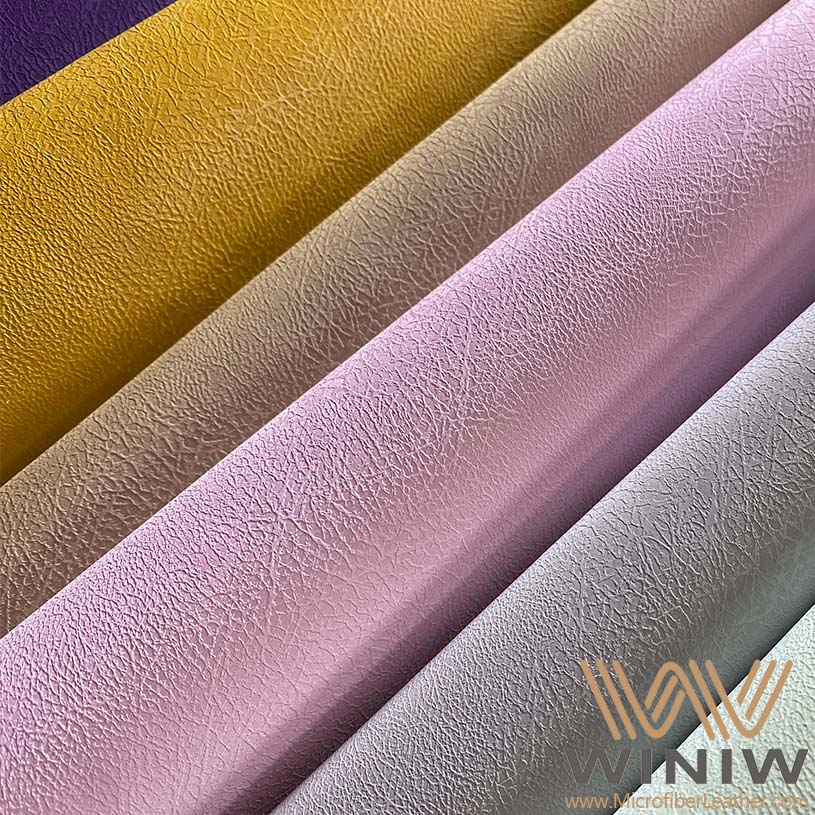
Illustrative image related to leatherette material
Cons: The main drawback of PU leatherette is its higher cost compared to PVC. Additionally, while PU is more durable than PVC, it may still crack over time, especially in high-stress applications.
Impact on Application: PU leatherette is often used in premium automotive interiors and high-end fashion items, where comfort and aesthetics are critical.
What Role Does Polyester Play in Leatherette Production?
Polyester is sometimes used as a base material for leatherette, often in combination with PVC or PU. It provides a strong and durable substrate that enhances the overall performance of the leatherette.
Pros: Polyester is resistant to stretching and shrinking, making it an excellent choice for products that require dimensional stability. It is also relatively inexpensive and can be dyed easily.
Cons: The main limitation of polyester leatherette is its lower resistance to heat compared to PVC and PU. It may not perform well in extreme temperature conditions.
Impact on Application: Polyester-based leatherette is suitable for mass-produced items like furniture and automotive interiors, where cost-effectiveness is a priority.
What Are the Considerations for International B2B Buyers?
When selecting leatherette materials, international buyers must consider compliance with local standards such as ASTM (American Society for Testing and Materials), DIN (Deutsches Institut für Normung), and JIS (Japanese Industrial Standards). In regions like Africa and South America, buyers should also account for local climate conditions, which can affect the performance and longevity of leatherette products. Additionally, ethical sourcing and environmental impact are becoming increasingly important, particularly in Europe, where consumers are more conscious of sustainability.
Summary Table of Leatherette Materials
| Material | Typical Use Case for leatherette material | Key Advantage | Key Disadvantage/Limitation | Relative Cost (Low/Med/High) |
|---|---|---|---|---|
| PVC | Automotive upholstery, furniture | Cost-effective and easy to clean | Less breathable, environmental concerns | Low |
| PU | High-end fashion, premium automotive | Soft, flexible, and more breathable | Higher cost, potential cracking over time | Med |
| Polyester | Mass-produced furniture, automotive | Strong and durable substrate | Lower heat resistance | Low |
By understanding the properties, advantages, and limitations of these materials, B2B buyers can make informed decisions that align with their product requirements and market demands.
In-depth Look: Manufacturing Processes and Quality Assurance for leatherette material
What Are the Key Stages in the Manufacturing Process of Leatherette Material?
The manufacturing of leatherette, also known as faux leather, involves several critical stages, each contributing to the final product’s quality and performance. The primary stages include material preparation, forming, assembly, and finishing.
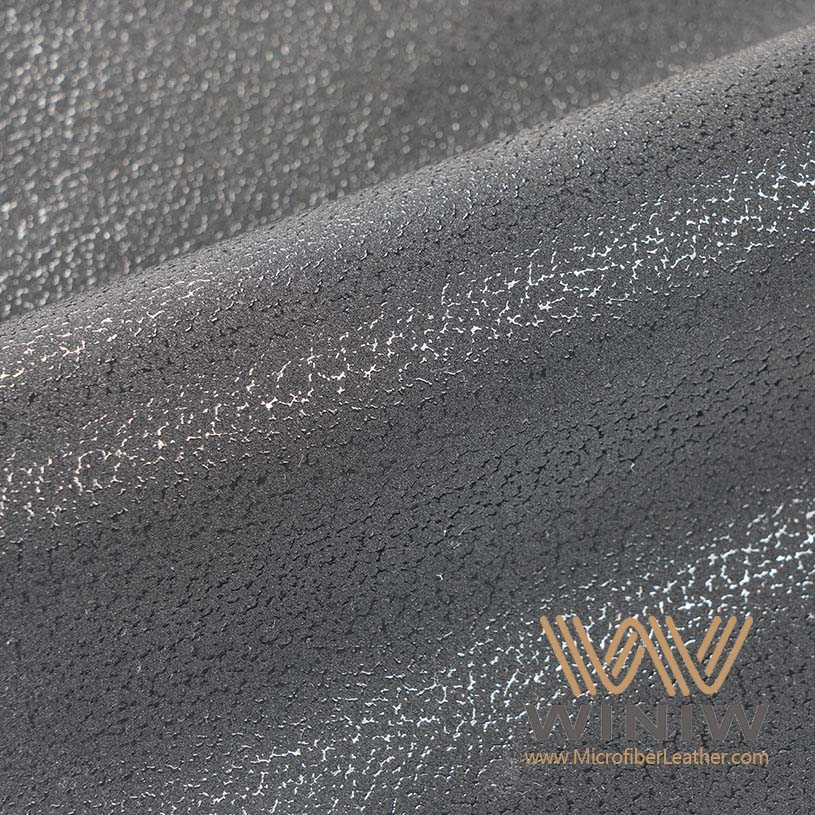
Illustrative image related to leatherette material
-
Material Preparation
The process begins with selecting a suitable base material, which can range from synthetic polyester to natural fibers like cotton or remnants of leather production. The chosen base is then treated to ensure it can bond effectively with the synthetic layer. This might involve cleaning, dyeing, or applying a primer to enhance adhesion. -
Forming the Leatherette
The next step involves the application of a polyurethane (PU) or polyvinyl chloride (PVC) layer over the prepared base material. This layer is typically textured to mimic the appearance and feel of genuine leather. Various techniques, such as calendering or coating, are employed to ensure a uniform thickness and texture. High-quality leatherette often undergoes a lamination process, where multiple layers are bonded together to enhance durability and aesthetic appeal. -
Assembly
After forming, the leatherette material is cut into specific shapes and sizes based on product requirements. This assembly can involve stitching, welding, or gluing, depending on the final application—be it automotive upholstery, furniture, or fashion items. Precision in this stage is crucial, as it ensures that the final product meets design specifications and performance standards. -
Finishing
The finishing stage enhances the leatherette’s appearance and functionality. This may include additional treatments like UV protection, water resistance, or anti-scratch coatings. The material is also inspected for color consistency and texture quality. Finishing techniques can vary widely, allowing manufacturers to offer a diverse range of colors and styles to meet market demands.
What Quality Assurance Measures Are Essential for Leatherette Manufacturing?
Quality assurance (QA) in leatherette production is vital for ensuring that the final product meets international standards and customer expectations. Key measures include adherence to international standards, comprehensive quality checkpoints, and effective testing methods.
-
International Standards and Certifications
For B2B buyers, understanding the certifications relevant to leatherette production is essential. ISO 9001 is a widely recognized quality management standard that ensures consistent quality across processes. Industry-specific standards, such as CE marking for safety and compliance in Europe, and API specifications for products used in the petroleum sector, are also crucial. Buyers should inquire about these certifications to ensure suppliers adhere to rigorous quality standards. -
Quality Control Checkpoints
Effective quality control typically involves multiple checkpoints throughout the manufacturing process:
– Incoming Quality Control (IQC): This step involves inspecting raw materials before they enter production. It ensures that the base materials meet predefined specifications.
– In-Process Quality Control (IPQC): During manufacturing, regular checks are performed to monitor the quality of the product at various stages, reducing the likelihood of defects.
– Final Quality Control (FQC): After the product is completed, a thorough inspection is conducted to evaluate the final product against quality standards. This includes testing for durability, colorfastness, and overall appearance. -
Common Testing Methods for Leatherette
Various testing methods are used to assess the quality of leatherette materials, including:
– Abrasion Resistance Tests: These determine how well the material can withstand wear and tear.
– Colorfastness Tests: These assess how resistant the material is to fading or discoloration when exposed to light or washing.
– Chemical Resistance Tests: These check how the material holds up against common chemicals, ensuring it is suitable for various applications.
How Can B2B Buyers Verify Supplier Quality Control Practices?
For international B2B buyers, especially those from regions like Africa, South America, the Middle East, and Europe, verifying a supplier’s quality control practices is crucial for ensuring product reliability and compliance.
-
Supplier Audits
Conducting audits is one of the most effective ways to evaluate a supplier’s quality management system. These audits can be performed by the buyer or by third-party organizations specializing in quality assessments. A thorough audit should review production processes, quality control measures, and adherence to international standards. -
Requesting Quality Reports
Buyers should always request quality reports that detail the results of inspections and tests performed throughout the manufacturing process. These reports provide insights into the supplier’s compliance with quality standards and can highlight any potential issues. -
Third-Party Inspections
Engaging third-party inspection agencies can add an extra layer of assurance. These organizations can conduct independent assessments of the manufacturing facility, process, and final products. This is particularly beneficial for buyers unfamiliar with the local market or those who want to ensure impartiality.
What Are the Quality Control Nuances for International B2B Buyers?
When sourcing leatherette materials internationally, buyers must navigate specific nuances in quality control that vary by region. Here are some considerations:
-
Cultural and Regulatory Differences
Different countries may have varying regulations regarding material safety, environmental impact, and ethical production. Buyers must familiarize themselves with these regulations to ensure compliance and avoid potential legal issues. -
Supply Chain Transparency
Given the complexity of global supply chains, transparency is crucial. Buyers should seek suppliers who provide clear information about their sourcing, production processes, and quality control measures. This transparency can significantly reduce risks associated with product recalls or compliance violations. -
Building Long-Term Relationships
Establishing strong relationships with suppliers can enhance quality control. Long-term partnerships often lead to better communication, increased trust, and a mutual commitment to maintaining high-quality standards. Regular visits to production facilities and ongoing dialogue about quality expectations can strengthen these relationships.
In conclusion, understanding the manufacturing processes and quality assurance measures for leatherette material is essential for B2B buyers. By focusing on these areas, buyers can make informed decisions, ensuring they source high-quality products that meet their needs and compliance requirements.
Practical Sourcing Guide: A Step-by-Step Checklist for ‘leatherette material’
When sourcing leatherette material, it’s essential to follow a structured approach to ensure you select the right product for your needs. This guide provides a practical checklist for B2B buyers, focusing on key considerations and actions to take throughout the procurement process.
Step 1: Define Your Technical Specifications
Before reaching out to suppliers, outline your specific requirements for leatherette material. Consider factors such as thickness, texture, color, and intended use (e.g., automotive, furniture, or fashion). A clear understanding of your specifications will help you communicate effectively with suppliers and ensure you receive samples that meet your needs.
Step 2: Research Potential Suppliers
Conduct thorough research to identify reliable suppliers of leatherette material. Look for manufacturers with a strong reputation in the industry, especially those who specialize in your specific application. Utilize trade directories, industry forums, and recommendations from peers to compile a list of potential suppliers.

Illustrative image related to leatherette material
Step 3: Evaluate Supplier Certifications
It’s crucial to verify the certifications of your shortlisted suppliers. Look for compliance with international quality standards such as ISO 9001 for quality management systems or OEKO-TEX certification for non-toxic materials. These certifications not only ensure product quality but also indicate a commitment to ethical and sustainable manufacturing practices.
Step 4: Request Samples for Quality Assessment
Once you have identified potential suppliers, request samples of the leatherette material. Assess the samples for key qualities such as texture, durability, and colorfastness. Testing samples in real-world conditions relevant to your application can provide insights into how the material performs under various scenarios.
Step 5: Compare Pricing and Terms
After evaluating the quality of samples, compare pricing structures from different suppliers. Consider not only the unit price but also shipping costs, minimum order quantities, and payment terms. A comprehensive evaluation of costs will help you determine the best overall value and avoid hidden expenses.
Step 6: Negotiate Contracts and Terms
When you have selected a supplier, enter negotiations to finalize the terms of your purchase. Discuss delivery timelines, warranty conditions, and any potential discounts for bulk purchases. Clear communication during this phase can prevent misunderstandings and ensure a smooth transaction.
Step 7: Establish a Long-Term Relationship
After successfully sourcing your leatherette material, consider fostering a long-term relationship with your supplier. Regular communication and feedback can enhance collaboration and lead to better pricing, improved product quality, and exclusive access to new materials in the future.
By following this checklist, B2B buyers can effectively navigate the sourcing process for leatherette material, ensuring they select the right products that meet their business needs while establishing strong supplier relationships.
Comprehensive Cost and Pricing Analysis for leatherette material Sourcing
What Are the Key Cost Components in Sourcing Leatherette Material?
When considering the procurement of leatherette material, it is essential to understand the various cost components that contribute to the total price. These typically include:
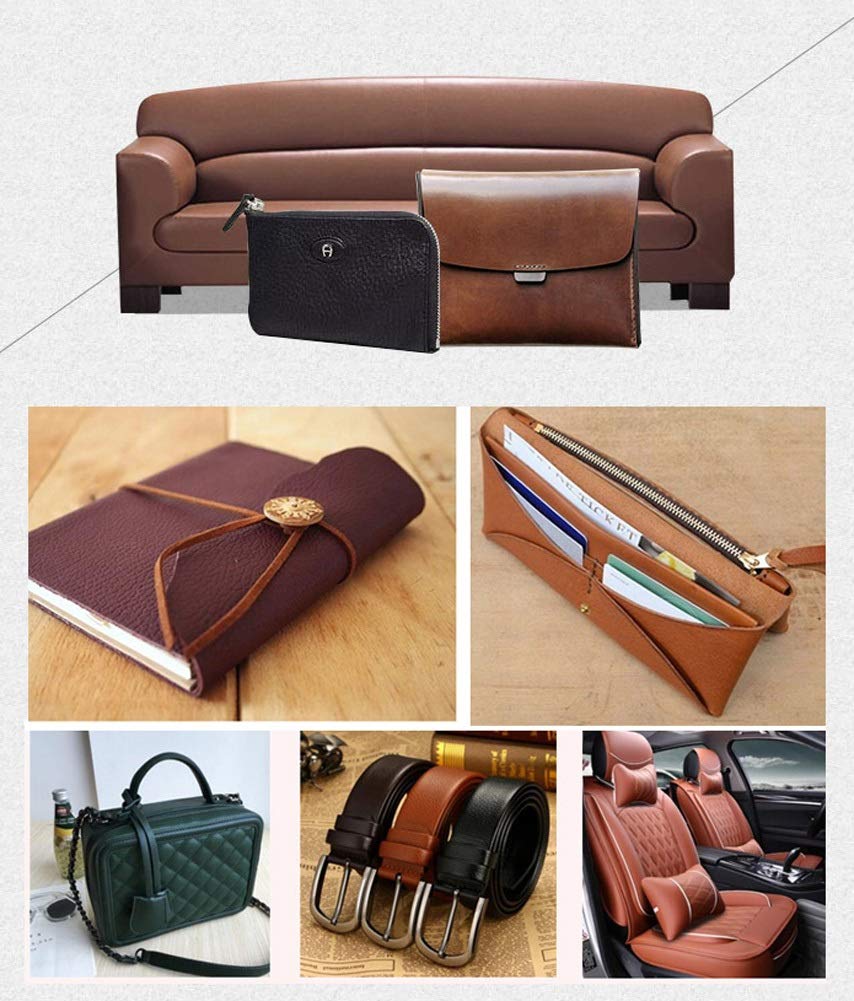
Illustrative image related to leatherette material
-
Materials: The primary cost driver, leatherette is made from synthetic fibers such as polyurethane (PU) or polyvinyl chloride (PVC). The price can vary significantly based on the quality of these materials, which may be influenced by market fluctuations and sourcing locations.
-
Labor: Labor costs in the manufacturing process can vary based on the country of production. For instance, countries with lower labor costs may offer more competitive pricing, but this can sometimes come at the expense of quality.
-
Manufacturing Overhead: This encompasses expenses related to factory maintenance, equipment, and utilities. Efficient production facilities can reduce overhead costs, which can be reflected in the pricing of leatherette.
-
Tooling: For custom orders, tooling costs can be significant. This includes the creation of molds or machinery adjustments necessary for specific designs or patterns.
-
Quality Control (QC): Ensuring the leatherette meets quality standards incurs costs. High-quality leatherette with certifications may carry a premium, but this can reduce returns and increase customer satisfaction.
-
Logistics: Transportation costs can vary widely based on shipping methods and distances. International buyers should consider freight costs, potential tariffs, and customs duties, particularly when importing from regions like Asia to Europe or Africa.
-
Margin: Suppliers typically build in a profit margin, which can vary based on market demand and competition. Understanding local market dynamics can help buyers negotiate better terms.
How Do Price Influencers Impact Leatherette Material Costs?
Several factors can influence the pricing of leatherette materials, especially for international buyers:
-
Volume and Minimum Order Quantity (MOQ): Bulk purchases generally lead to lower per-unit costs. Negotiating favorable terms based on volume can significantly reduce overall expenditure.
-
Specifications and Customization: Custom designs or specific color requirements can drive up costs. Standard products are usually more affordable, so buyers should weigh the necessity of customization against budget constraints.
-
Material Quality and Certifications: Higher-quality leatherette that meets industry certifications often comes at a premium. Buyers should assess whether the benefits of superior materials justify the additional costs.
-
Supplier Factors: The supplier’s reputation, reliability, and production capacity can impact pricing. Established suppliers with consistent quality may charge more, but they can also offer stability in supply and service.
-
Incoterms: Understanding shipping terms (like FOB, CIF, or DDP) is crucial for budgeting total costs. Incoterms dictate who bears the risk and costs at various stages of transport, affecting the final price.
What Negotiation Tips Should International Buyers Consider for Leatherette Sourcing?
When negotiating prices for leatherette sourcing, particularly from diverse regions such as Africa, South America, the Middle East, and Europe, consider the following strategies:
-
Research Market Prices: Understanding current market rates for leatherette in your target region can provide leverage during negotiations. Utilize industry reports and supplier quotes to establish a baseline.
-
Assess Total Cost of Ownership: Beyond the initial purchase price, consider long-term factors such as durability, maintenance, and potential for resale. A slightly higher upfront cost may lead to better value over time.
-
Leverage Relationships: Building strong relationships with suppliers can lead to better pricing and terms. Regular communication and transparency about your needs can foster trust and lead to long-term partnerships.
-
Explore Multiple Suppliers: Engaging with several suppliers can create competitive pressure, helping to drive down costs. However, ensure that you maintain a focus on quality and reliability.
-
Adapt to Local Market Conditions: Each region has unique economic conditions and cultural nuances that can affect pricing and negotiation styles. Tailoring your approach to align with these factors can enhance your effectiveness.
Conclusion and Pricing Disclaimer
While leatherette material often presents a cost-effective alternative to genuine leather, pricing can vary widely based on numerous factors. It is essential for B2B buyers to conduct thorough research and engage in strategic negotiations to achieve favorable terms. Prices mentioned in this analysis are indicative and can fluctuate based on market conditions, supplier negotiations, and specific buyer requirements. Always request detailed quotes and consider all cost components when making purchasing decisions.
Alternatives Analysis: Comparing leatherette material With Other Solutions
When considering materials for upholstery, automotive interiors, or fashion items, leatherette material often comes into play as a popular choice. However, it’s essential to evaluate alternatives that may offer different benefits and drawbacks, particularly for international B2B buyers in diverse markets such as Africa, South America, the Middle East, and Europe. This analysis compares leatherette with two viable alternatives: genuine leather and textile-based materials.
| Comparison Aspect | Leatherette Material | Genuine Leather | Textile-Based Materials |
|---|---|---|---|
| Performance | Water-resistant, easy to clean, but less breathable | Highly durable, breathable, and develops a patina over time | Varies widely; can be durable but often less water-resistant |
| Cost | Inexpensive (3-10 times cheaper than leather) | Premium pricing, significantly higher than leatherette | Generally low to moderate cost, depending on the material |
| Ease of Implementation | Simple to produce and process | Complex tanning process; requires skilled labor | Easy to source and manufacture |
| Maintenance | Low maintenance, easy cleaning | Requires regular conditioning and care | Depends on the fabric; some are machine washable |
| Best Use Case | Cost-effective furniture, automotive interiors | Luxury items, high-end automotive interiors | Casual clothing, functional furniture, or low-cost goods |
What are the Pros and Cons of Genuine Leather?
Genuine leather is often regarded as a luxury material, prized for its durability and comfort. It breathes well, making it suitable for items that come into direct contact with the skin, and its aging process can enhance its aesthetic appeal. However, genuine leather comes with a significantly higher price tag, which may not align with budget-conscious projects. Additionally, it requires more maintenance to prevent wear and tear, and there are ethical concerns surrounding animal products that may deter some buyers.
How do Textile-Based Materials Compare?
Textile-based materials, which can include cotton, polyester, or blends, offer versatility and affordability. They can be produced in a wide range of colors and patterns, catering to diverse design preferences. Moreover, many textiles are machine washable, making them easy to maintain. However, they typically lack the durability and water resistance of leatherette and genuine leather, which may limit their use in high-traffic areas or luxury applications.
Conclusion: How to Choose the Right Material for Your Needs?
Selecting the right material depends on specific project requirements, budget constraints, and target audience preferences. For B2B buyers focused on cost-effectiveness and ease of maintenance, leatherette may be the ideal choice, especially for automotive interiors or budget-friendly furniture. If the goal is to convey luxury and durability, genuine leather could justify its higher cost through long-term value. Conversely, for casual or functional applications where aesthetics are prioritized over durability, textile-based materials may be the most suitable option. Evaluating these factors will help ensure that the chosen material aligns with both market demands and business objectives.
Essential Technical Properties and Trade Terminology for leatherette material
What Are the Key Technical Properties of Leatherette Material?
When sourcing leatherette material, understanding its technical properties is crucial for making informed purchasing decisions. Here are some of the most critical specifications to consider:
1. Material Composition
Leatherette is primarily made from synthetic fibers such as polyester or cotton, coated with polyvinyl chloride (PVC) or polyurethane (PU). The choice between PVC and PU affects the material’s flexibility, durability, and resistance to wear. In B2B transactions, knowing the composition helps buyers assess the suitability of leatherette for specific applications, such as automotive interiors or furniture.
2. Durability Rating
Typically, leatherette materials have a durability lifespan ranging from 5 to 10 years, depending on the quality of the product and the conditions of use. High-quality leatherette can withstand heavy usage without significant wear. In B2B contexts, durability ratings are essential for evaluating long-term cost-effectiveness and performance, especially for industries requiring robust materials.
3. UV Resistance
One of the advantages of leatherette over genuine leather is its superior resistance to UV light, which prevents fading and degradation over time. This property is particularly beneficial for products exposed to sunlight, such as outdoor furniture or automotive upholstery. Buyers should inquire about UV resistance ratings to ensure longevity in their applications.
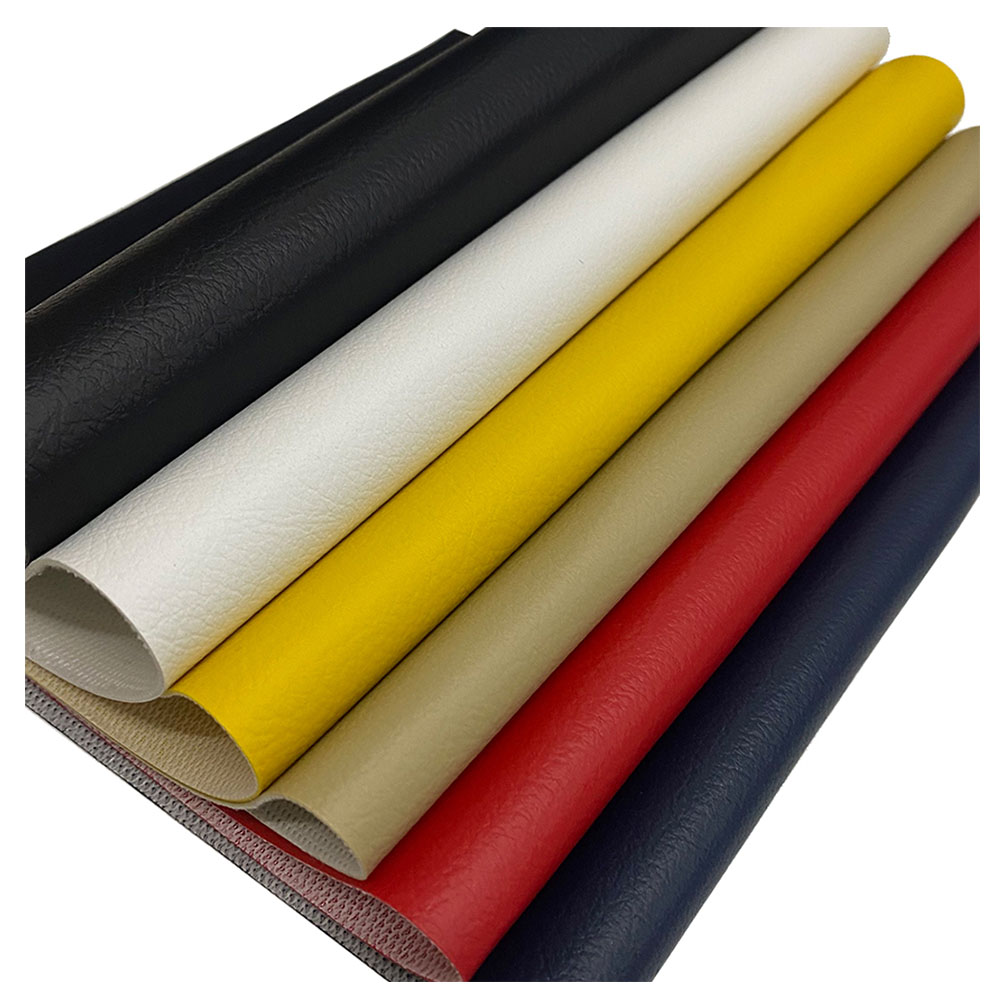
Illustrative image related to leatherette material
4. Water Resistance
Leatherette materials typically offer good water resistance, making them suitable for a variety of environments. This characteristic is important for industries where moisture exposure is common, such as marine applications or healthcare settings. Understanding water resistance helps B2B buyers select appropriate materials for their specific use cases.
5. Thickness and Weight
The thickness of leatherette can vary, generally ranging from 0.6 mm to 2.5 mm. Thicker options tend to be more durable but may be heavier, which can impact shipping and handling costs. Buyers should consider both thickness and weight when evaluating leatherette for applications requiring specific performance characteristics.
6. Color Fastness
Leatherette can be dyed in a wide array of colors, and color fastness is a key property that determines how well the material retains its color after exposure to light and washing. High color fastness ratings are crucial for products in fashion and home decor. Buyers should prioritize materials with high color retention to minimize the need for replacements or touch-ups.
What Are Common Trade Terms Used in Leatherette Transactions?
Familiarity with industry jargon can facilitate smoother negotiations and transactions. Here are some common terms used in the leatherette market:
1. OEM (Original Equipment Manufacturer)
This term refers to companies that produce parts or products that are sold under another company’s brand name. In the leatherette industry, OEMs might create custom leatherette materials for automotive or furniture brands. Understanding OEM relationships helps buyers identify potential suppliers that meet their specific requirements.
2. MOQ (Minimum Order Quantity)
MOQ refers to the smallest number of units a supplier is willing to sell. For leatherette materials, MOQs can vary widely based on the supplier and product type. Knowing the MOQ is vital for buyers to avoid overcommitting to stock that may not be needed, thus optimizing inventory costs.
3. RFQ (Request for Quotation)
An RFQ is a document sent to suppliers to request pricing and terms for specific products, including leatherette. It outlines the buyer’s requirements and specifications, allowing suppliers to provide competitive quotes. Using RFQs can streamline the procurement process and ensure buyers get the best value.
4. Incoterms (International Commercial Terms)
Incoterms define the responsibilities of buyers and sellers in international trade. They clarify who is responsible for shipping, insurance, and tariffs. Familiarity with Incoterms is essential for B2B buyers to understand their obligations and rights when importing leatherette materials from different countries.
5. Lead Time
Lead time refers to the time it takes from placing an order to receiving the product. In the leatherette market, lead times can vary based on the supplier’s production capacity and logistics. Buyers should consider lead times in their planning to ensure timely project completion and product availability.
6. Certification Standards
These are the benchmarks that leatherette materials may need to meet, such as ISO certifications or environmental standards. Buyers should verify that their suppliers adhere to relevant certifications to ensure product quality and compliance with regulations.
By understanding these technical properties and trade terminologies, international B2B buyers can make more informed decisions when sourcing leatherette materials, optimizing both cost and performance in their applications.
Navigating Market Dynamics and Sourcing Trends in the leatherette material Sector
What Are the Key Market Drivers Influencing Leatherette Material Sourcing?
The global leatherette market is witnessing significant growth, driven by several key factors. The increasing demand for affordable and versatile materials in automotive, furniture, and fashion industries is a primary driver. Leatherette offers a cost-effective alternative to genuine leather, making it attractive for manufacturers aiming to reduce production costs while maintaining aesthetic appeal. Emerging markets in Africa and South America are experiencing a surge in demand as urbanization and rising disposable incomes lead to increased consumer spending on home furnishings and automotive interiors.
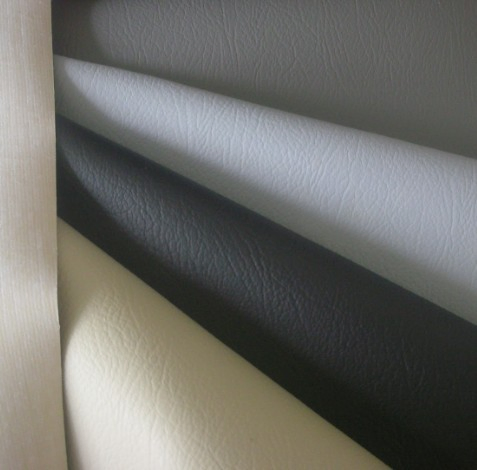
Illustrative image related to leatherette material
Technological advancements in manufacturing processes are also reshaping the landscape. Innovations in synthetic materials, such as enhanced durability and improved aesthetics, have made leatherette a viable option for premium product lines. B2B buyers are increasingly utilizing digital platforms to source materials, fostering a more competitive environment. E-commerce solutions are streamlining procurement processes, enabling buyers from diverse regions—including Nigeria and Germany—to access a wider array of suppliers and products.
Moreover, the ongoing transition towards sustainability is influencing sourcing decisions. Buyers are becoming more conscious of their suppliers’ environmental practices, seeking partnerships with manufacturers that prioritize eco-friendly production methods. As a result, the leatherette market is evolving to meet both economic and ethical standards, creating opportunities for suppliers who can demonstrate commitment to sustainable practices.
How Important Is Sustainability and Ethical Sourcing in the Leatherette Sector?
Sustainability and ethical sourcing are becoming critical components of the leatherette material sector. The environmental impact of synthetic materials, particularly those derived from petroleum-based products, is a growing concern. As awareness of plastic pollution rises, businesses are under pressure to adopt greener alternatives. This trend is particularly pronounced in regions like Europe, where stringent regulations are pushing manufacturers towards sustainable practices.
In response, some producers are exploring bio-based materials and eco-friendly production techniques, aiming to reduce the carbon footprint associated with leatherette manufacturing. B2B buyers are increasingly prioritizing suppliers who can provide certifications that verify sustainable practices, such as Global Organic Textile Standard (GOTS) or OEKO-TEX certification. These certifications not only enhance brand credibility but also align with the values of environmentally conscious consumers.
Furthermore, ethical sourcing practices are essential for maintaining a positive brand image. Buyers are encouraged to conduct thorough due diligence on their suppliers to ensure that labor practices are fair and that there are no violations of human rights within the supply chain. By choosing suppliers committed to ethical standards, businesses can enhance their reputation and foster customer loyalty in a competitive market.
How Has the Leatherette Market Evolved Over Time?
The evolution of leatherette material has been shaped by changing consumer preferences and technological advancements. Initially introduced as a low-cost alternative to genuine leather, leatherette gained popularity in the mid-20th century, particularly in the automotive and furniture sectors. Its affordability and versatility made it a staple in households and vehicles alike.
Over the decades, advancements in manufacturing processes have significantly improved the quality of leatherette. Modern formulations now offer a range of textures and finishes that closely mimic the appearance and feel of real leather, enhancing its appeal across various industries. As consumers become more environmentally aware, the shift towards sustainable practices has further influenced the evolution of leatherette, positioning it as a responsible choice for both buyers and manufacturers.
In summary, understanding the market dynamics, sustainability considerations, and historical context of leatherette material is crucial for B2B buyers. By staying informed about these trends, businesses can make strategic sourcing decisions that align with both market demands and ethical standards.
Frequently Asked Questions (FAQs) for B2B Buyers of leatherette material
-
How do I assess the quality of leatherette material before making a purchase?
To assess the quality of leatherette, consider factors such as thickness, texture, and smell. High-quality leatherette should feel robust yet flexible, with a texture that mimics real leather. Check for uniformity in color and pattern; inconsistencies may indicate inferior quality. Additionally, inquire about the manufacturing process and materials used, as reputable suppliers will provide transparency regarding the composition, typically PVC or PU. Request samples to evaluate how the material holds up under various conditions, such as exposure to heat and moisture. -
What is the best leatherette for automotive applications?
For automotive applications, look for leatherette that offers high durability and resistance to UV fading. A PU-based leatherette is often preferred due to its superior flexibility, comfort, and ease of cleaning compared to PVC alternatives. Ensure the material meets automotive industry standards, particularly regarding flammability and wear resistance. Additionally, consider options that provide a breathable finish to enhance passenger comfort. Collaborating with suppliers experienced in automotive upholstery can also yield valuable insights into the best materials suited for specific vehicle models. -
What customization options are available when sourcing leatherette?
Many suppliers offer customization options such as color matching, texture variations, and even printing or embossing logos on leatherette materials. When sourcing, discuss your specific needs regarding shades and finishes to ensure they can meet your requirements. Additionally, inquire about the minimum order quantities (MOQs) for customized products, as these may vary by supplier. Customization can enhance your brand’s uniqueness and appeal, particularly in competitive markets, so partnering with a flexible supplier is crucial. -
What are the typical minimum order quantities (MOQs) for leatherette materials?
Minimum order quantities (MOQs) for leatherette can vary significantly depending on the supplier and the type of customization requested. Generally, MOQs can range from 100 to 500 meters or units for standard materials. For customized options, MOQs may be higher due to the additional manufacturing processes involved. Always clarify MOQs with potential suppliers early in your negotiations to align with your production needs and budget constraints. This understanding can help you manage inventory levels effectively. -
What payment terms should I expect when sourcing leatherette internationally?
Payment terms can vary widely among suppliers, but common practices include a deposit upfront (usually 30% to 50%) with the balance due upon shipment or delivery. Some suppliers may offer net payment terms, such as 30 or 60 days after delivery. Ensure to clarify payment methods accepted, such as wire transfers, letters of credit, or online payment platforms, as these can impact transaction security and speed. Establishing clear payment terms in the contract is crucial to protect both parties and avoid disputes. -
How do I ensure quality assurance (QA) for leatherette products?
Implementing a robust quality assurance process involves several steps. First, request samples to evaluate material quality and compliance with your specifications. Next, establish clear QA criteria and communicate these to your supplier. Consider conducting third-party inspections during production and before shipment to ensure adherence to standards. Regular audits of your supplier’s manufacturing processes can also help maintain quality over time. Documentation of all QA procedures should be kept for accountability and future reference. -
What logistics considerations should I keep in mind when importing leatherette?
When importing leatherette, consider shipping methods, lead times, and customs regulations specific to your country. Air freight is faster but more expensive, while sea freight is cost-effective for larger orders but takes longer. Ensure you understand import duties and taxes to avoid unexpected costs upon arrival. Collaborate with logistics providers familiar with the textile industry to streamline the process and mitigate risks. Additionally, maintain communication with your supplier regarding shipment tracking to manage delivery timelines effectively. -
What are the environmental impacts of leatherette production?
Leatherette, primarily made from synthetic materials like PVC or PU, raises environmental concerns due to its non-biodegradable nature. The production process often involves chemicals that can be harmful if not managed properly. When sourcing leatherette, consider suppliers who prioritize sustainable practices, such as using recycled materials or implementing eco-friendly production methods. Additionally, investigate certifications that indicate compliance with environmental standards, which can enhance your brand’s reputation and appeal to environmentally conscious consumers.
Top 10 Leatherette Material Manufacturers & Suppliers List
1. Diffen – Leather Insights
Domain: diffen.com
Registered: 2007 (18 years)
Introduction: Leather:
– Material: Animal hide treated with chemicals.
– Cost: Premium price luxury item; much more expensive compared to fake leather.
– Durability: Very durable (10-15 years if maintained well), used in rugged conditions, but will fade in sun and degrade with age.
– Washable: Usually no.
– Breathable: Yes.
– Colors: Less variety; most often shades of black and brown, sometimes white.
– Animal…
2. Autolist – Leatherette Overview
Domain: autolist.com
Registered: 2000 (25 years)
Introduction: This company, Autolist – Leatherette Overview, is a notable entity in the market. For specific product details, it is recommended to visit their website directly.
3. Myroik – Leatherette Key Product
Domain: myroik.com
Registered: 2016 (9 years)
Introduction: Leatherette is a synthetic material that imitates the appearance of natural leather. It is composed of a layer of polyurethane (PU) or polyvinyl chloride (PVC) on a cotton backing. Key characteristics include:
– Leather-like appearance available in various colors and textures.
– Wear resistance, though not as durable as high-quality leather.
– Easy maintenance, cleanable with a damp cloth.
Differ…
4. Decorative Fabrics Direct – PU Leather & Vinyl Upholstery
Domain: decorativefabricsdirect.com
Registered: 2004 (21 years)
Introduction: PU Leather & Faux Leather | Vinyl Upholstery Fabric
– Terms: Free Shipping Coupon Code: SHIPFREE for most $199 orders.
– Product Types: Faux leather, vinyl upholstery fabric, artificial leather, synthetic leather, PU leather, imitation leather.
– Features: Durable, easy to clean, available in rich colors, significantly lower cost than genuine leather.
– Purchase Options: Available for wholesale by…
5. BambuLab – Pebbled PU Leatherette Fabric
Domain: us.store.bambulab.com
Registered: 2019 (6 years)
Introduction: {“product_name”:”Pebbled PU Leatherette Fabric”,”price”:”$14.89 USD”,”caution_for_use”:”Releases toxic and harmful gases during laser processing; ensure good ventilation.”,”color_options”:[“Black”,”White”,”Brown”,”Gray”],”size”:”300x300mm”,”quantity”:”5 pcs”,”processing_modes”:[“Laser Cutting & Engraving”,”Blade Cutting”],”product_specifications”:{“product_id”:”YD001, YD002, YD003, YD004″,”thickne…
6. BRAUM – Black Perforated Leatherette Material
Domain: braumracing.com
Registered: 2014 (11 years)
Introduction: {“product_name”: “BRAUM Black Perforated Leatherette Material”, “price”: “$59.99”, “availability”: “In stock”, “SKU”: “BRFB-BPPU”, “description”: “Our BRAUM perforated leatherette material is durable, scratch resistant and very easy to maintain.”, “width”: “56””, “pricing_per_yard”: “Qty 1 = 36″ x 56″”, “note”: “REFUNDS NOT AVAILABLE FOR RAW MATERIAL ORDERS!”, “free_swatch_sample”: “upon request”…
7. Sewport – Faux Leather Solutions
Domain: sewport.com
Registered: 2015 (10 years)
Introduction: Faux leather, also known as synthetic leather, is a petroleum-based alternative to genuine leather. It is soft to the touch, water-resistant, and highly resistant to stains, making it easy to clean. While less durable than real leather, it is resistant to abrasions and cuts, ideal for upholstery in homes with children or pets. Faux leather can be produced in various colors, including unconventiona…
8. Contrado – Faux Leather Upholstery Fabric
Domain: contrado.com
Registered: 2004 (21 years)
Introduction: Faux Leather Upholstery Fabric | Leatherette Upholstery Fabric
– Price: From $37.50
– Composition: 90% PVC, 5% Polyester, 5% Cotton
– Weight: 17.70oz
– Max Width: 1.40yd
– Durability: Martindale > 30,000 revs
– Finish: Matte, Leather stamp effect
– Backing: Knitted Polycotton
– Fire Rating: BS5852 Furnishings
– Certification: Greenguard Certified
– Care Instructions: Surface wipe only, clean gentl…
9. Sohoconcept – Leatherette Solutions
Domain: sohoconcept.com
Registered: 2006 (19 years)
Introduction: Leatherette is a synthetic material designed to mimic leather, also known as fake leather, faux leather, pleather, or synthetic leather. It is made from natural or synthetic cloth fibers coated in PVC or polyurethane and contains no animal by-products. Leather is made from animal hide treated with chemicals. The main differences between leather and leatherette include:
– Price: Leather is signifi…
10. Rub N Restore – Leather Care Solutions
Domain: rubnrestore.com
Registered: 2010 (15 years)
Introduction: Different types of leather include: 1. Full Grain Leather – Finest quality, fully intact hide, absorbent, can be aniline or semi-aniline. 2. Top Grain Leather – Second best grade, sanded for uniform appearance, repels liquids, often thinner for upholstery. 3. Aniline & Semi-Aniline Leather – Full or top grain, marbled appearance, absorbent, prone to stains. 4. Pull-up Leather – Full grain with pig…
Strategic Sourcing Conclusion and Outlook for leatherette material
In the evolving landscape of material sourcing, leatherette stands out as a versatile and cost-effective alternative to traditional leather. Its growing popularity across various sectors, especially in automotive and furniture industries, stems from its aesthetic appeal and practical advantages, such as low maintenance and resistance to UV fading. For international B2B buyers, particularly those in Africa, South America, the Middle East, and Europe, strategic sourcing of leatherette can lead to significant cost savings without compromising on quality or style.
As the market continues to innovate, high-quality leatherette options are becoming increasingly difficult to distinguish from genuine leather, allowing businesses to cater to diverse consumer preferences. This trend not only enhances product offerings but also aligns with ethical and environmental considerations, appealing to a broader customer base.
Moving forward, international buyers should prioritize partnerships with reliable suppliers who emphasize sustainable practices and product transparency. By doing so, businesses can capitalize on the growing demand for leatherette while reinforcing their commitment to quality and ethical sourcing. Embrace the future of materials by integrating leatherette into your product lines and stay ahead in a competitive marketplace.
Important Disclaimer & Terms of Use
⚠️ Important Disclaimer
The information provided in this guide, including content regarding manufacturers, technical specifications, and market analysis, is for informational and educational purposes only. It does not constitute professional procurement advice, financial advice, or legal advice.
While we have made every effort to ensure the accuracy and timeliness of the information, we are not responsible for any errors, omissions, or outdated information. Market conditions, company details, and technical standards are subject to change.
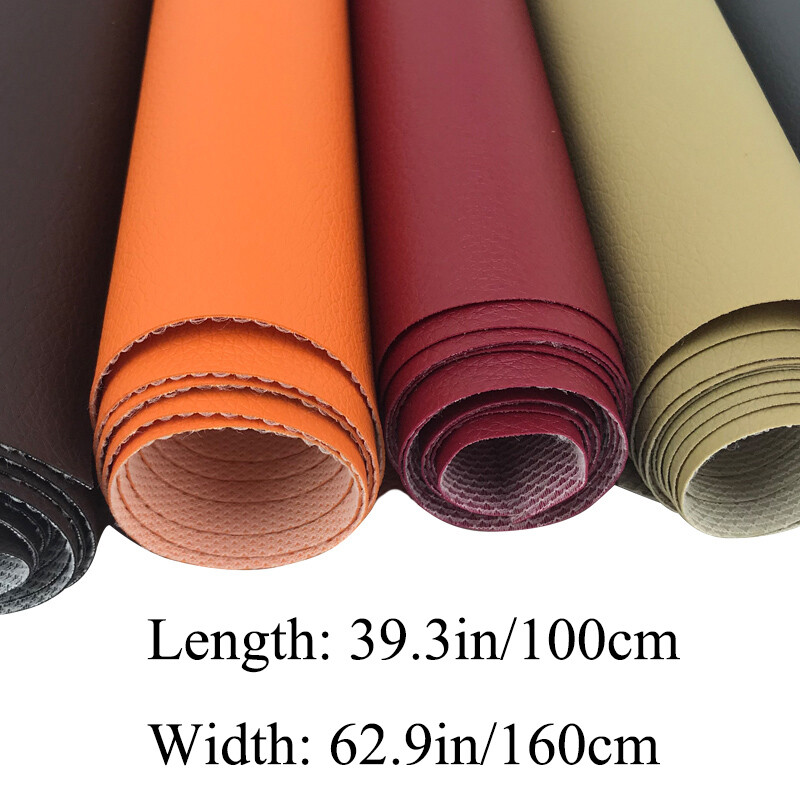
Illustrative image related to leatherette material
B2B buyers must conduct their own independent and thorough due diligence before making any purchasing decisions. This includes contacting suppliers directly, verifying certifications, requesting samples, and seeking professional consultation. The risk of relying on any information in this guide is borne solely by the reader.


